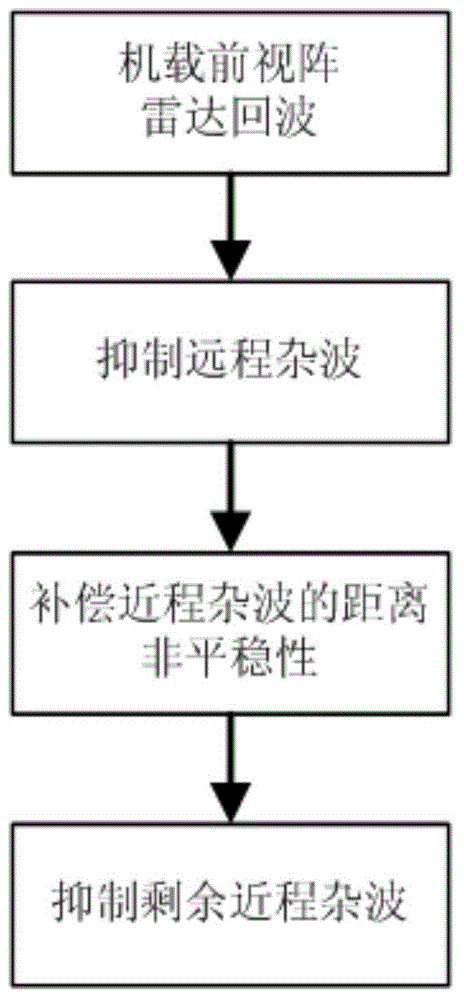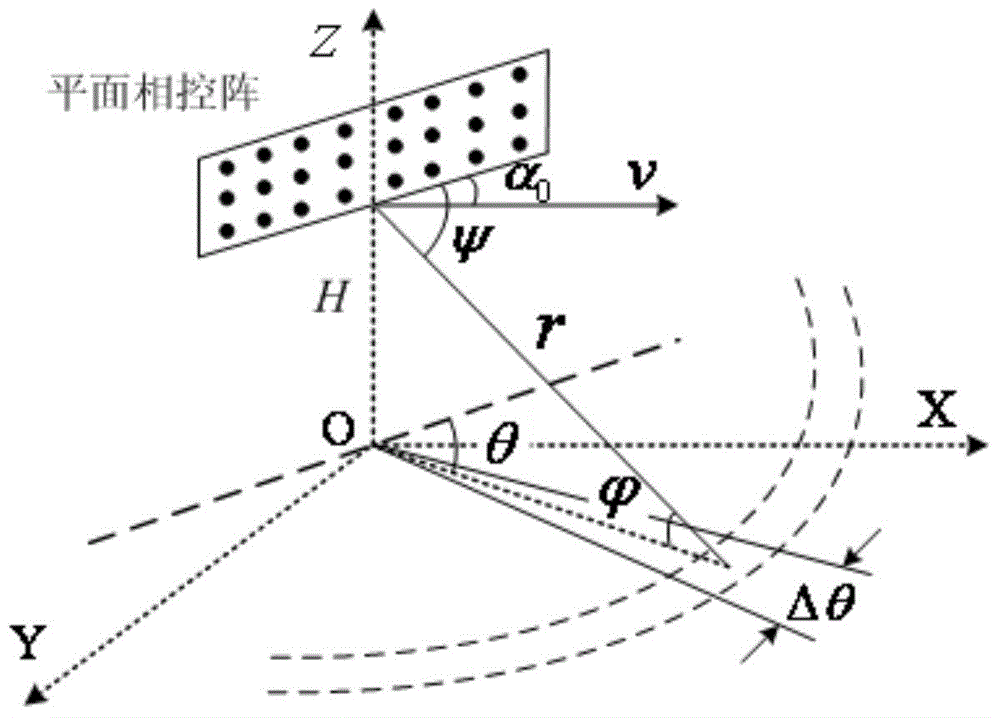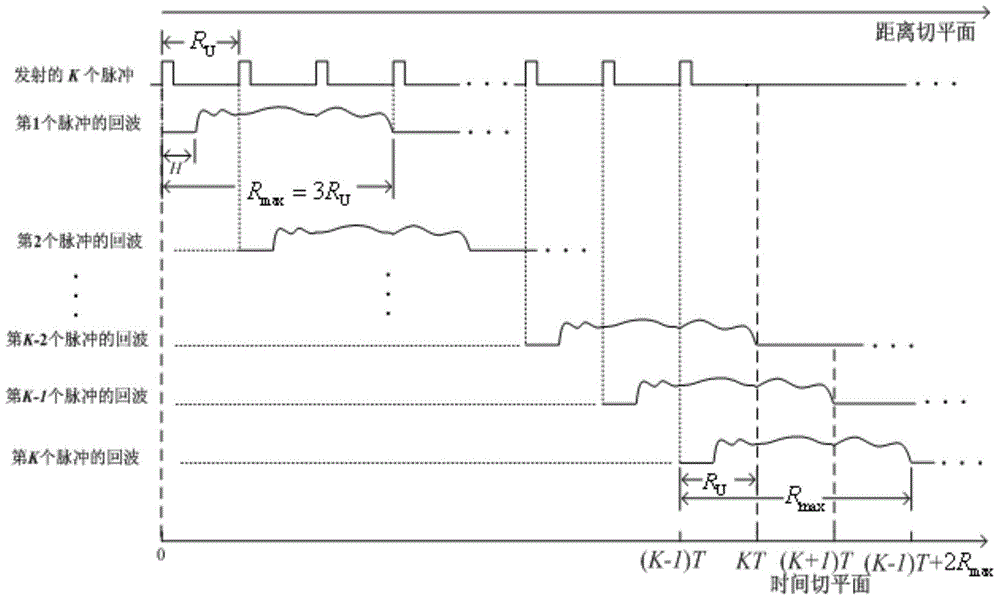Space-time adaptive processing method for airborne forward-looking array radar
A technology of space-time self-adaptation and processing method, which is applied to space-time self-adaptive processing of airborne forward-looking array radar, airborne phased array radar for clutter suppression and moving target detection, and airborne forward-looking array radar for short-distance In the field of ground moving target detection, it can solve problems such as clutter suppression performance loss, beam pattern distortion, and difficulty in obtaining training samples, so as to achieve the effects of accelerating convergence speed, protecting energy, and reducing the amount of computation
- Summary
- Abstract
- Description
- Claims
- Application Information
AI Technical Summary
Problems solved by technology
Method used
Image
Examples
Embodiment Construction
[0025] The present invention will be further described below in conjunction with the accompanying drawings:
[0026] refer to figure 1 , is a brief flow chart of the space-time adaptive processing method of the airborne forward-looking array radar of the present invention. The space-time adaptive processing method of the airborne forward-looking array radar includes the following steps:
[0027] Step 1, use the airborne forward-looking array radar to transmit a coherent pulse train composed of K pulses, and use the receiving array of the airborne forward-looking array radar to receive echo data; the airborne forward-looking array radar is a pulse Doppler radar, and the The receiving array of the forward-looking array radar is composed of N arrays of uniformly arranged array elements, and each array element is composed of M arrays. nIt is composed of a uniformly arranged array element, and the total number of range gates of the airborne forward-looking array radar is L. Obta...
PUM
 Login to View More
Login to View More Abstract
Description
Claims
Application Information
 Login to View More
Login to View More - R&D
- Intellectual Property
- Life Sciences
- Materials
- Tech Scout
- Unparalleled Data Quality
- Higher Quality Content
- 60% Fewer Hallucinations
Browse by: Latest US Patents, China's latest patents, Technical Efficacy Thesaurus, Application Domain, Technology Topic, Popular Technical Reports.
© 2025 PatSnap. All rights reserved.Legal|Privacy policy|Modern Slavery Act Transparency Statement|Sitemap|About US| Contact US: help@patsnap.com



